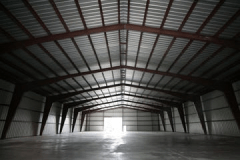Structural Design Details
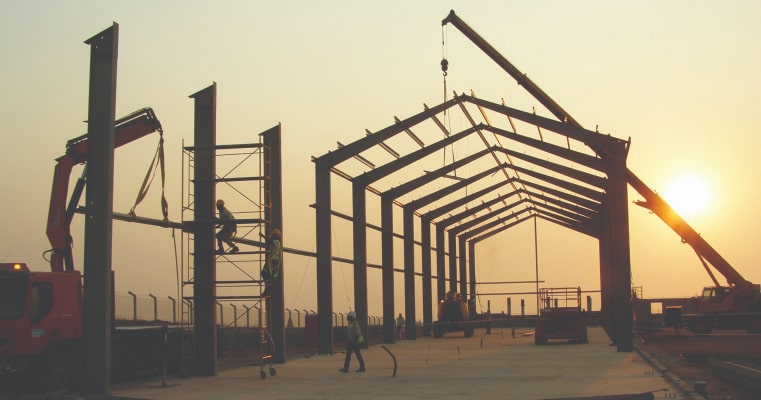
Once you’re familiar with the advantages that a steel building offers, it’s time to find the best design to fit your needs. Typically, DIY prefabricated metal building kits come in one of two different designs. These two designs are then normally divided into two subcategories. Next, we’ll take a look at these designs, their differences, and unique features to give you a better idea of what you’ll need.
Designs
Although the name might be unfamiliar, one look at these lightweight, versatile structures will be sure to ring some bells. They’re good for easy transportation and quick assembly without the need for large teams of skilled laborers. The half-dome style gives the structure a lot of durability and strength. Despite its relatively affordable price when compared to many other types of steel buildings, the Quonset Hut is able to withstand seismic conditions and strong winds. These structures are also revered for their long-lasting qualities. With the proper setup and basic maintenance, a Quonset Hut could last for decades.
Rigid Frame
Generally speaking, aesthetics is the primary advantage that Rigid Frame buildings have when compared with the Quonset huts. Rigid Frames structures look like more traditional buildings. Although being slightly more expensive than Quonset huts, Rigid Frames are still more affordable than other steel building options. They’re also known for their dependability and sturdiness.
As with all PEB styles, the specific design chosen will be determined by your intended use for the building. Let’s explore some various Rigid Frame styles from which you can choose.
Straight Column
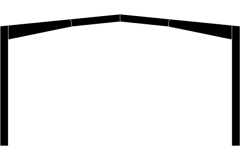
Systems with a straight column design are economical options that offer spacious interiors that reach nearly 70-feet in width. They are often used for commercial applications such as retail stores, offices, small gyms, and more.
Beam And Column
These Rigid Frame systems are often used to make spacious buildings that have vast floor space. Despite their affordable price, these structures make it easy to expand in the future. Beam and Column PEBs are perfect for industrial and warehouse purposes.
Lean-To
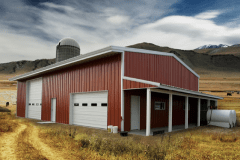
If you’re hoping to achieve expansion without spending much money or investing much time, lean-to structures are your best bet. You don’t have to interrupt any ongoing operations as these ‘wings’ can be set up economically, quickly, and easily. They’re great for use in a variety of applications including equipment storage, product storage, and loading space.
Open Web Truss
When structures are in need of longer spans, open web truss-style buildings can offer fantastic flexibility when it comes to design options. These framing systems are strong, light-weight, and ideal for areas where clear floor space is required, such as for indoor stadiums or aircraft hangars. The vast clear spans offered by these structures make their design quite versatile.
Clear Span
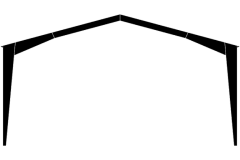
Clearspan designs take advantage of rafters and tapered columns in combination with girts to offer optimized span capabilities without obstruction. Column-free and clear-spanned structures offer vast interior space that’s not obstructed by anything. These sturdy designs are great for larger commercial buildings, aircraft hangars, auditoriums, gymnasiums, and other recreational applications.
Multi-Span
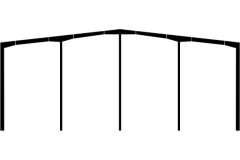 Multi-span designs share many features with clear-span structures. However, an interior column is added in order to allow the building to attain an even greater width. These designs are economical and are great for commercial, warehouse, office, and industrial uses where some columns on the interior wouldn’t obstruct organizational processes.
Multi-span designs share many features with clear-span structures. However, an interior column is added in order to allow the building to attain an even greater width. These designs are economical and are great for commercial, warehouse, office, and industrial uses where some columns on the interior wouldn’t obstruct organizational processes.
Take the next step
We have a passion for unconventional solutions that bring your vision to life.
Terminology For Metal Buildings
The terminology involved with metal buildings evolves over time as new technology is developed both in terms of production and design. Are they metal buildings, pre-engineered buildings, prefabricated buildings, modular buildings, structural steel buildings, or something else completely? Although all of these terms are encompassed under the term ‘metal buildings’, each one points to some slight variations in design, production, and function. Let’s dive into each term to give a better idea of what they’re referring to.
Modular Buildings
Steel buildings only require around six scrapped vehicles for construction while a normal home with 2,000-square-feet needs around 40-50 trees. -The Steel Recycling Institute
Prefabricated Buildings
Also known as prefab buildings, these PEB styles are designed, created, and assembled offsite. Although early versions of metal buildings built between 1850 and 1960 were appropriately called prefabricated buildings, the term Metal Building Systems is more apt name for modern versions of the prefab building. These modern versions are finished at the factory. Classrooms, guardhouses, and toll booths are just a few examples.
Pre-Engineered Buildings
This style of building got its start in the early 1960s. They were originally given the ‘pre-engineered’ name because they were made from designs already at the facility that were standard at the time. Customers could select from a variety of standard dimensions of a steel building such as 60×100, 40×80, 40×60, 30×50, 30×40, etc. These designs typically came with standard dimensions and framed openings that would be used for windows, doors, loading areas, and more.
Metal Building Systems
Metal Building Systems encompass all of the modern buildings you see today that have basic exterior finishes, roof or wall panels, and roofs with low pitches. Distribution centers and residential garages are a few examples. This exact term has been adopted by the official industry to better describe the types of structures being produced.

